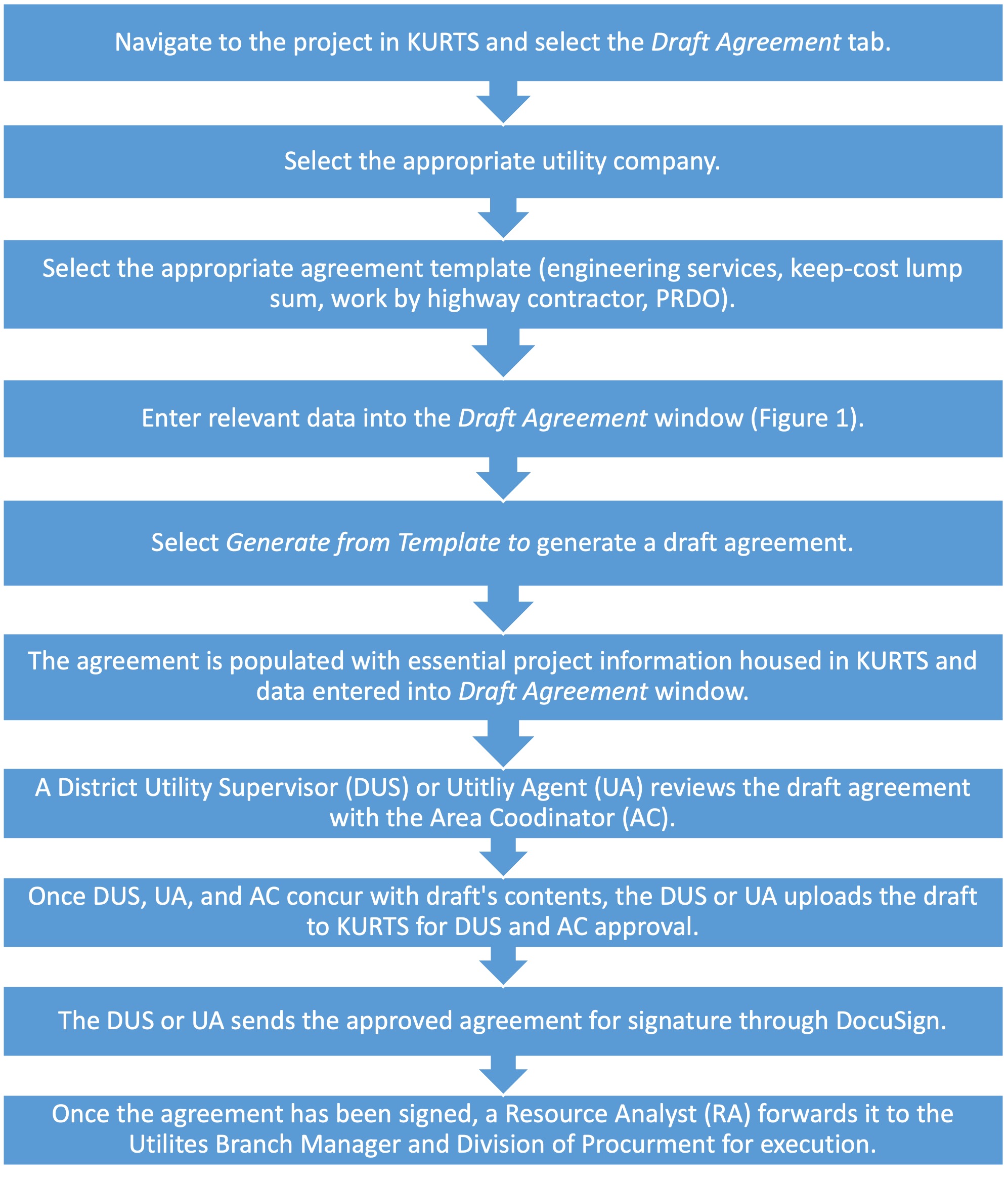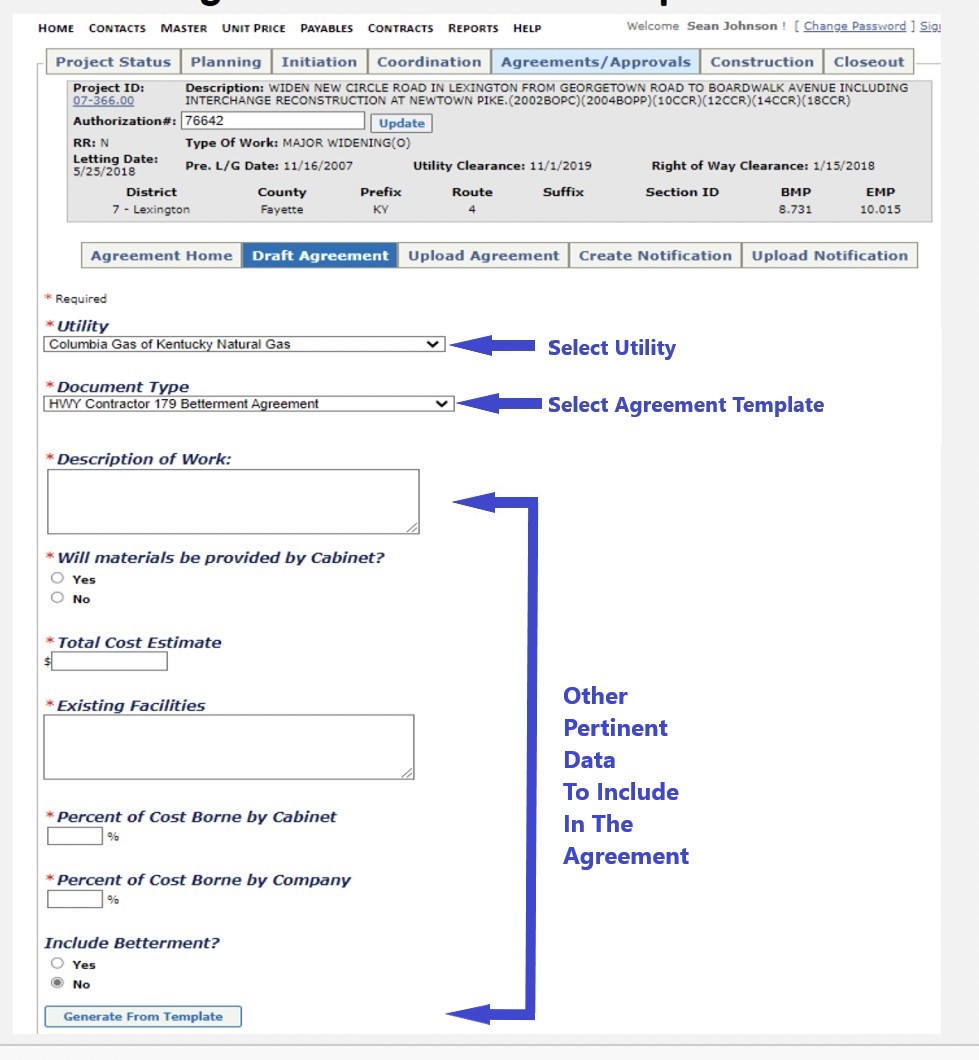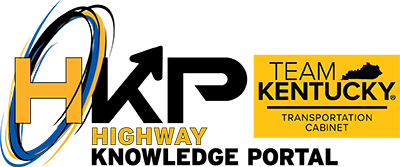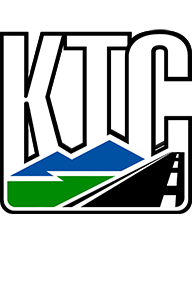Search for articles or browse our knowledge portal by topic.
Utility Betterments and Agreements
This article reviews methods KYTC uses to handle utility agreements and betterments, both of which are key elements of the utility relocation process.

Agreements are written documents that clearly specify the responsibilities of a utility company and KYTC. They may cover instances where the Cabinet reimburses a utility company or receives reimbursement from a utility company.
When utility relocations are eligible for reimbursement KYTC uses two methods to administer work:
- Standard Agreement
- Developed for each utility relocation on a project. In eMars, standard agreements are abbreviated SC.
- KYTC uses several types of utility agreements (see UR-1104 and the HKP Article Utility Fiscal Document Reviews).
- In this article, the word agreement is used as shorthand for standard agreement.
- Project Relocation Delivery Order (PRDO)
- A delivery order developed under the terms of an overall master agreement with a utility company.
- PRDOs are less common than standard agreements. See UR 1103-2 for more information.
A District Utility Supervisor (DUS) or Utility Agent (UA) collects the information used to draft an agreement or PRDO. This process begins with the DUS or UA sending potentially affected utility companies a project authorization letter (i.e., state letter) notifying them of a project. UR-700 describes these letters. Companies then develop utility relocation proposal packages and submit them to KYTC (see UR-1000 for more details).
The utility relocation proposal package underpins KYTC’s efforts to evaluate and negotiate the terms of impacts from a road project. Negotiation culminates in an executed agreement with a utility company, or a PRDO when one is viable. Agreements are developed in KURTS (as shown in the flowchart below).

Figure 1 Draft Agreement Window

Red Flag
2.1 Work By Highway Contractor
If a highway contractor’s bid package incorporates utility facility betterment work at the request of a utility company, in all likelihood the utility company will have to reimburse KYTC for this work. This arrangement is formalized through a keep-cost Work by the Highway Contractor Betterment agreement or PRDO.
When a PRDO is drafted, the DUS, AC, and possibly the Resource Analyst must notify the Division of Accounts and provide it with the following information:
- Project number
- Utility company
- Betterment amount, including betterment construction estimate and agreement copy
Once this information is received, the Division of Accounts establishes a construction phase funding line item. This line item specifies that $0 will be funded prior to the agreement being executed. UR-1802-3 specifies procedures utility companies follow to reimburse KYTC for betterment work performed by a highway contractor.
KYTC does not compensate utility companies for relocation work under the following circumstance:
- Privately owned utility facilities that unreasonably interfere with a highway per KRS 416.140
- Work completed prior to funding authorization
- Betterments or improvements to utility facilities
- Improperly documented expenditures
- Work not included in approved relocation plans, cost estimates, or change orders
- Work not required by the designated highway project
- Utility work or costly changes to an approved design for the benefit or convenience of the utility company or its contractor
- New facilities that do not replace existing facilities and which do not directly serve the highway project
23 CFR 645.105 formally defines a betterment as “any upgrading of the facility being relocated that is not attributable to the highway construction and is made solely for the benefit of and at the election of the utility.” KYTC adheres to this definition in all matters related to betterments.
Apply the following guidelines when working with betterments:
- Making a utility company whole (see Section 4.3) and betterments are not the same.
- Making a utility company whole includes constructing replacement facilities that maintain the overall functional capacity of the original facility. This includes a relocated facility rearranges the functional capacity to improve operational efficiency in response to current design or operational needs.
- A utility can be made whole by replacing certain functions, including changes required to meet current standards.
- Whenever a utility company upgrades a facility, KYTC only reimburses the company for replacement of the in-kind component, not the betterment.
- A utility company may ask KYTC to not treat a facility modification as a betterment. This request is submitted to the DUS and must demonstrate one of the following conditions is present:
- The proposed change is a requirement of the highway project.
- Materials are being changed to an equivalent standard.
- Devices or materials used on the existing facility are no longer manufactured routinely and cannot be incorporated readily into the relocated facility.
- The proposed change is needed to comply with current laws.
- The proposed change is required under design practices currently followed by the utility company and it directly benefits the highway project.
4.1 Betterment Credits
A betterment credit is a credit given to a project for the cost of upgrading a facility that is being relocated.
When reviewing a situation where a utility company proposes the installation of devices or materials that differ from those currently in place, use the following guidance to determine if a betterment credit is appropriate.
No betterment credit is required for the replacement of utility devices or materials that are:
- Required by the highway project
- Have equivalent but not identical standards
- The next highest grade or size when the existing devices or materials are no longer regularly manufactured,
- Required by law under governmental and appropriate regulatory commission code
- Required by current design practices regularly followed by the utility in its own work, and the highway project directly benefits.
Examples of devices or materials of a type different from those being replaced include substituting aluminum clad steel reinforced conductors for copper conductors, underground cables for aerial lines, or fiber optic cable for conventional cable.
Red Flag
4.2 Undergrounding Existing Overhead Facilities
KYTC may reimburse a utility company when it relocates overhead facilities underground if it demonstrates doing so is the more cost-effective alternative. But the Cabinet will not reimburse additional costs associated with relocating facilities underground unless that placement directly benefits KYTC.
If local ordinances, public opinion, or project needs require the relocation of overhead facilities underground, KYTC’s Secretary or their designee determine whether transportation funds should be used to perform such work. On federally funded projects, the Cabinet must ask FHWA to approve the recommendation.
4.3 Making Utilities Whole
Making a utility whole typically involves facilities being restored to their original function. This means a relocated facility delivers a level of service equivalent to what it provided before its relocation. Several examples of making a utility whole are presented below. Each example is eligible for federal participation.
- A replacement facility that maintains the overall functional capacity of the original facility. In response to current design or operation needs, the replacement facility can rearrange capacity to achieve more efficient operations.
- A replacement facility that integrates features (a) to meet current standards or (b) which are required by current design practices regularly followed by the utility company in its own work.
- A replacement facility that differs in type from the original facility, if the utility company’s current practice is to install facilities of this type. Under this scenario, KYTC covers the cost of providing the most economical type of replacement facility or restoration of service.
4.4 Betterment Compensation Calculations
Three methods are used to calculate compensation for betterments:
- Compare the percentage of the estimated reimbursable, in-kind replacement costs to estimated betterment alternative costs. Then, derive a reimbursable participation percentage which may be applied to the utility company’s total project costs. UR-1004 details methods for calculating the participation percentage.
- Compare the estimated cost of an in-kind replacement to the estimated costs of alternatives with betterments. Then, apply a betterment credit to the agreement amount.
- Prepare a lump sum agreement for the estimated in-kind replacement cost when the in-kind replacement alternative represents a small percentage of the actual work to be performed and recordkeeping would be onerous. The Cabinet may write a lump sum agreement for the estimated in-kind replacement cost.
More complex methods of calculating the betterment credit may be necessary when relocating a facility that involves betterment and the project’s complexity makes it difficult to separate specific items that undergo betterment. In these cases, a utility company must submit the following estimates to KYTC, which the agency uses to determine the betterment credit:
- Estimate for the in-kind replacement cost only
- Estimate for the total cost including betterment
New facilities are facilities that do not require relocation because they did not exist before the road project. Under no circumstance will KYTC compensate utility companies for new facilities; they are considered betterments.
Before an agreement is finalized, KYTC and the utility company must agree on the scope of work and the method for calculating reimbursement. See UR-1802-3 for details on invoicing betterments.
4.5 Utility Company Reimbursement of Betterment Costs
When a utility company has work incorporated into the road project’s bid package which involves betterment work, it will likely be obligated under an agreement to reimburse KYTC for betterment work done by the Cabinet’s highway contractor.
Recovery of costs are secured through the cooperation of:
- District Office Utilities Section
- District Office Project Delivery and Preservation Branch
- Division of Accounts (Contact early-on for assigned agreement C funding line)
- Utilities and Rail Branch
UR-1802-3 defines mechanisms through which utility companies reimburse KYTC for betterment costs.
4.6 Work By Highway Contractor with Betterment Agreement Example
The following video provides additional information on betterment agreements that involve relocation work performed by a highway contractor.
4.7 Betterment Recap
A general rule of thumb is that whenever a utility company enhances any part of a relocated facility (e.g., improve its productivity or efficiency) as part of a KYTC roadway project, it counts as a betterment. When this occurs, associated costs should be deducted from invoicing. If the betterment work is included in a highway contract, KYTC will bill the utility company at project completion.
For work conducted under the highway contract through betterment agreements, KYTC construction section engineers/inspectors should monitor relocation work that involves facility betterment and keep a running total of construction item quantities so the Cabinet can bill the utility company.
The video walks through the development of a betterment agreement in KURTS.

